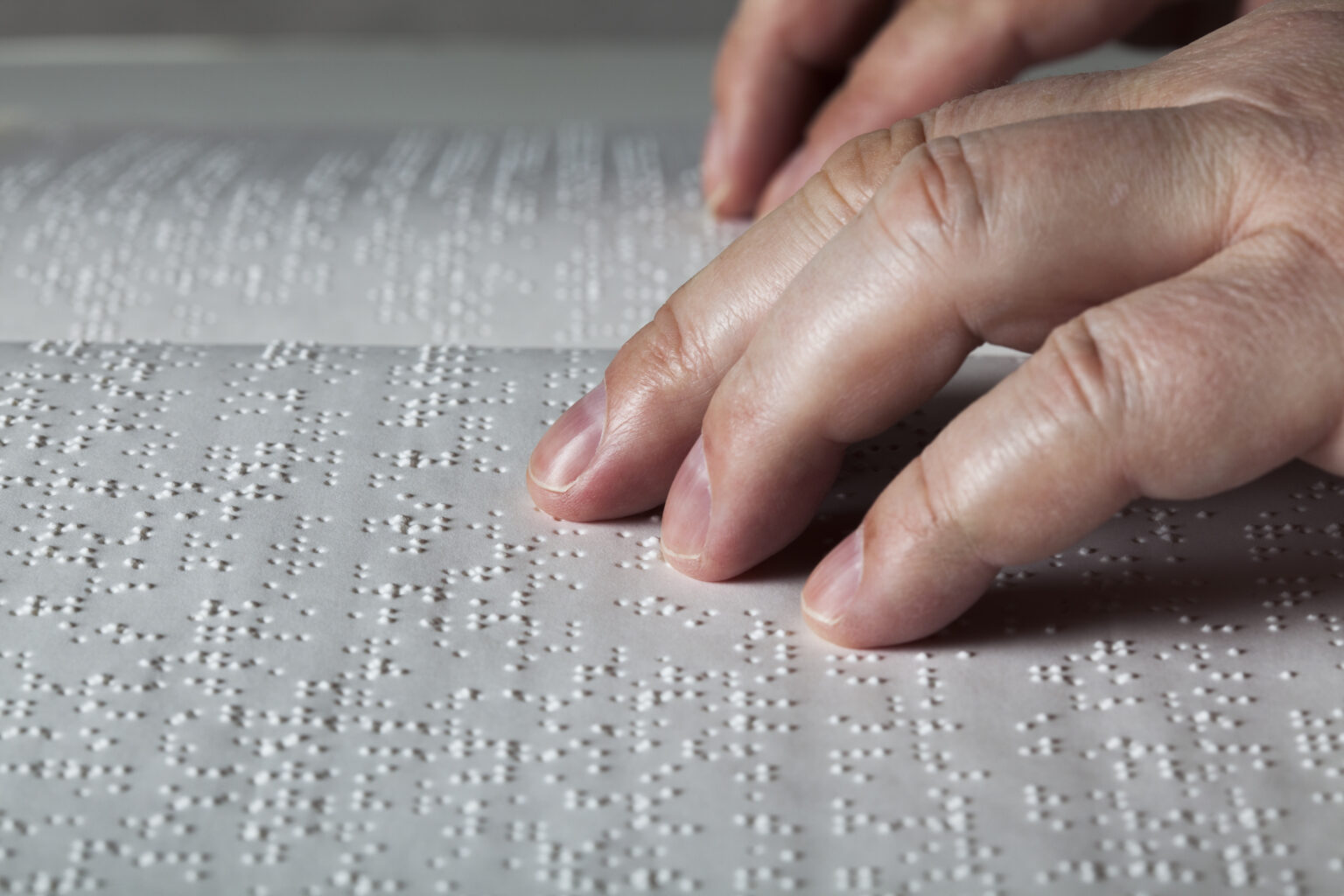When was the last time you evaluated your accommodations for those who are blind or have limited vision? In honor of World Sight Day on October 13, 2022, CyraCom’s translation experts want to share important information about how you can offer better support to people with vision challenges.
What is transcription?
Braille Transcription
Braille is a tactile writing system of raised dots that can be read with the fingers. CyraCom provides braille transcription services that meet or exceed the standards set forth by the Braille Authority of North America (BANA) and Unified English Braille (UEB). We also provide specialized printing and binding services, which can be customized to your needs.
Large-Print Transcription
CyraCom can help convert your organization’s materials into large-print documents for those with limited vision. We optimize the formatting and structure of your documents to make your materials easier to read. Large print is proven to help:
Elderly patients or customers: Although not all senior citizens are visually impaired, many experience vision loss and may find large print more accessible.
People with dyslexia: Studies have shown that reading errors decrease when people with dyslexia read documents with larger text.
People who speak English as a second language: Complex formatting or small text can make reading in a non-native language more difficult even if they are comfortable with the language.
Section 508-Compliant Document Remediation Services
Section 508 of the Rehabilitation Act requires that US federal agencies make their electronic and information technology accessible to people with disabilities. This law also applies to organizations that do business with a federal agency. CyraCom provides Section 508-compliant document remediation services. We can convert your electronic documents into a digital audio format that those with blindness or limited vision can listen to via a laptop, desktop computer, or mobile phone.
Get a free quote for transcription services
Why transcription services are needed
People who are blind or have limited vision should have equal access to your content. While advances in technology like screen readers make it easier to engage, many people who have vision loss prefer the independence of reading text on their own.
Additional tips
Beyond transcription, organizations can do more to help people who are blind or have limited vision. As previously mentioned, screen readers are a crucial tool to help people engage with digital content. Think about how you can adapt your content for easier consumption:
- Heading structure for navigation: Organize your content using a structured system for headings that makes it easier for screen reader users to find the information they’re looking for.
- Alt text for images: All images on your website should have a brief description that adds value for people who cannot see well. This is especially important for informative images (such as infographics). When creating the alt text, the text should contain the message you wish to convey through that image, and if the image includes text, that text should also be included in the alt.
- Unique and descriptive link names: When including links in your digital content, use text that properly describes where the link will go. Using “click here” is not considered descriptive, and is ineffective for a screen reader user.
- Choose colors carefully: Red-green color deficiency affects approximately 8% of the world’s population. Using only red-green colors in your materials can prevent these individuals from understanding your message.
We’re here to help
Contact our team at [email protected] today to ask questions or request a free translation quote.









